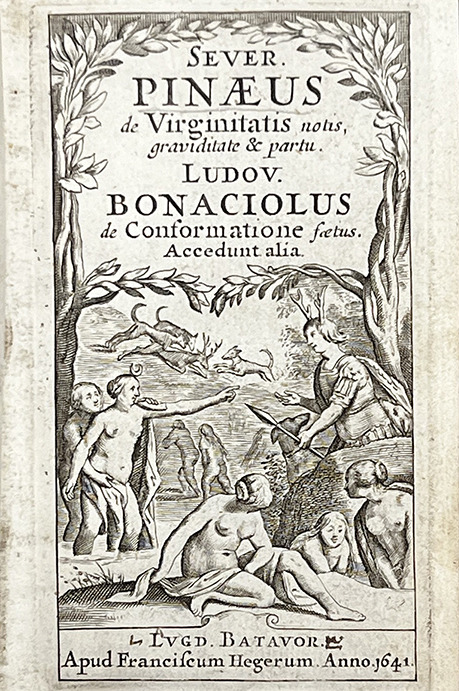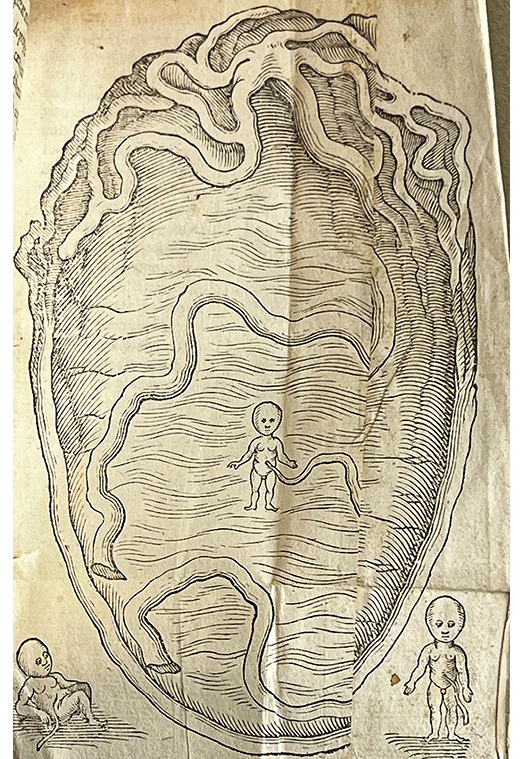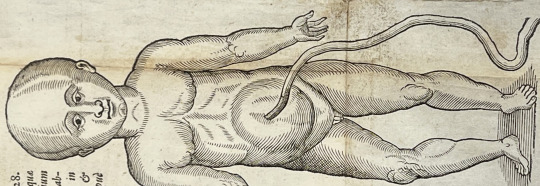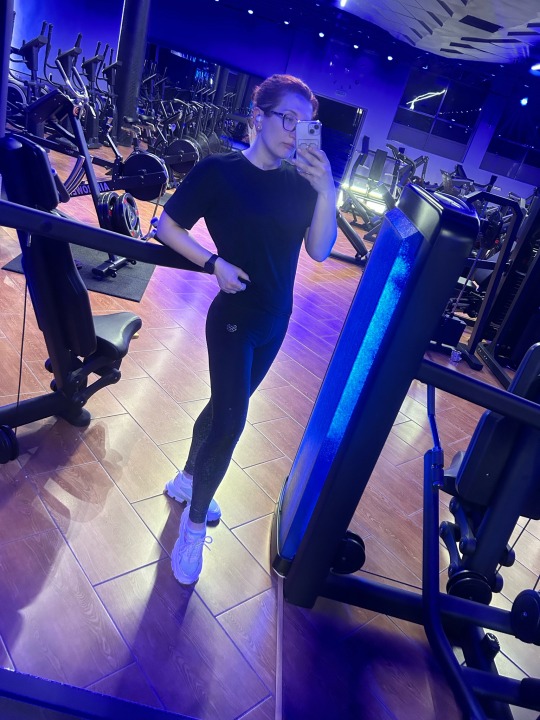#women health
Text
Foods You Can Eat Instead of Taking Vitamins and Supplements 🍎🥥🥦🥑🍌
Vitamin A: Carrots, sweet potatoes, spinach, kale.
B Vitamins: Whole grains, meat, eggs, nuts, legumes.
Vitamin B1 (Thiamine): Whole grains, legumes, nuts, pork, fortified cereals.
Vitamin B2 (Riboflavin): Dairy products, lean meats, almonds, leafy greens.
Vitamin B3 (Niacin): Poultry, fish, nuts, legumes, whole grains.
Vitamin B5 (Pantothenic Acid): Meat, poultry, eggs, avocado, whole grains.
B6: Chicken, turkey, fish, bananas, chickpeas.
Folate (Vitamin B9): Leafy greens, legumes, citrus fruits, fortified grains.
Vitamin B12: Animal products (meat, fish, dairy), fortified plant-based foods.
Vitamin C: Citrus fruits, strawberries, bell peppers.
Vitamin D: Fatty fish (salmon, mackerel), fortified dairy products, sunlight.
Vitamin E: Sunflower seeds, almonds, vegetable oils, nuts, spinach, broccoli.
Vitamin F (Essential Fatty Acids): Fatty fish, flaxseeds, chia seeds, walnuts.
Vitamin H (Biotin): Eggs, nuts, sweet potatoes, salmon, avocado.
Vitamin K: Leafy greens (kale, spinach), broccoli, Brussels sprouts.
Vitamin K2: Fermented foods (natto, cheese), animal products, leafy greens.
Vitamin L1 (Anthranilic Acid): Cruciferous vegetables (cabbage, cauliflower), legumes.
Vitamin P (Bioflavonoids): Citrus fruits, berries, onions, green tea.
Vitamin Q (Ubiquinone): Fatty fish, organ meats, spinach, cauliflower.
Vitamin T (L-carnitine): Red meat, poultry, fish, dairy products.
Vitamin U (S-Methylmethionine): Cabbage, broccoli, Brussels sprouts.
Betaine: Beets, spinach, whole grains, seafood.
Boron: Fruits (apples, pears), legumes, nuts, avocado.
Calcium: Dairy products, leafy greens (kale, collard greens), almonds.
Carnosine: Beef, poultry, fish.
Carnitine: Red meat, dairy products, fish.
Catechins: Green tea, black tea, dark chocolate.
Choline: Eggs, liver, beef, broccoli, soybeans.
Creatine: Red meat, fish, poultry.
Chromium: Broccoli, whole grains, nuts, brewer's yeast.
Chondroitin: Cartilage-rich foods (bone broth, connective tissue of meat).
Copper: Shellfish, nuts, seeds, organ meats, lentils.
Coenzyme Q10 (CoQ10): Fatty fish, organ meats, nuts, soybean oil.
Ellagic Acid: Berries (strawberries, raspberries), pomegranates.
Glucosinolates: Cruciferous vegetables (cabbage, broccoli, cauliflower).
Glucosamine: Shellfish (shrimp, crab), bone broth, animal connective tissues.
Glutamine: Dairy products, meat, poultry, cabbage.
Inositol: Citrus fruits, beans, nuts, whole grains.
Iodine: Seafood, iodized salt, dairy products.
Iron: Red meat, poultry, beans, lentils, spinach.
L-Theanine: Mushrooms, black tea, white tea, guayusa.
Lignans: Flaxseeds, whole grains, cruciferous vegetables.
Lutein and Zeaxanthin: Leafy greens (spinach, kale), corn, eggs.
Lycopene: Tomatoes, watermelon, pink grapefruit.
Magnesium: Spinach, nuts, seeds, whole grains, beans.
Manganese: Nuts, seeds, whole grains, leafy greens, tea.
Melatonin: Cherries, grapes, tomatoes.
Omega-3 fatty acids: Flaxseeds, chia seeds, walnuts, fatty fish.
PABA (Para-Aminobenzoic Acid): Whole grains, eggs, organ meats.
Pantothenic Acid (Vitamin B5): Meat, poultry, fish, whole grains, avocado
Pectin: Apples, citrus fruits, berries, pears.
Phosphorus: Dairy products, meat, poultry, fish, nuts.
Prebiotics: Garlic, onions, leeks, asparagus, bananas (unripe), oats, apples, barley, flaxseeds, seaweed.
Probiotics: Yogurt, kefir, fermented foods (sauerkraut, kimchi).
Potassium: Bananas, oranges, potatoes, spinach, yogurt.
Polyphenols: Berries, dark chocolate, red wine, tea.
Quercetin: Apples, onions, berries, citrus fruits.
Resveratrol: Red grapes, red wine, berries, peanuts.
Rutin: Buckwheat, citrus fruits, figs, apples.
Selenium: Brazil nuts, seafood, poultry, eggs.
Silica: Whole grains, oats, brown rice, leafy greens.
Sulforaphane: Cruciferous vegetables (broccoli, Brussels sprouts), cabbage.
Taurine: Meat, seafood, dairy products.
Theanine: Green tea, black tea, certain mushrooms.
Tyrosine: Meat, fish, dairy products, nuts, seeds.
Vanadium: Mushrooms, shellfish, dill, parsley, black pepper.
Zeatin: Whole grains, legumes, nuts, seeds.
Zinc: Oysters, beef, poultry, beans, nuts, whole grains.
#women health#health and wellness#healthy diet#healthy living#healthy lifestyle#womens health#health#health tips#wellness#levelupjourney#dream girl guide#dream girl tips#dream girl journey#health is wealth#clean girl aesthetic#clean girl#it girl#nutrition#supplements#organic#food#nutrients#healthyhabits#healthy life tips#self love journey#self love#dream life#dream girl
2K notes
·
View notes
Text
The fact that most women are taking wrong dosage of medicine because they were tested upon men only which is causing long term side effects is proof the world is male centered.
#Medicine Misogyny#gender bias#medicine#radblr#radical feminism#radical feminists do interact#radical feminists do touch#terfsafe#radical feminist safe#trans exclusionary radical feminist#healthcare#women health
42 notes
·
View notes
Text

Have a relaxing time
41 notes
·
View notes
Text
Update on poisoning in female schools in Iran
Up until today, officially 67 schools in 19 cities have been the target of chemical attacks by the regime. Unofficial reports say the true number is 116 schools. The majority of these schools are girls schools. The education of students is officially disturbed. Some are afraid to attend school. Many spend their time at school in fear. Some schools send their students home sooner than expected to decrease the risk of being attacked. Bringing a bottle of water and masks to schools is a protocol now, putting a wet piece of cloth on your face decrease the risk of being poisoned. This is one of the most despicable things the regime has done.
Please share this news. This is an important case of human rights violation and is getting zero coverage. Help show the world the True face of IR regime. Follow 1500tasvir on Twitter. They share the latest news on these attacks.
#iran#mahsa amini#jina amini#human rights#iran protests#politics#iran revolution#feminism#help iran#middle east#crimes against women#female education#women health#misogyny#intersectional feminism#terrorism#irgcterrorists#twitter
274 notes
·
View notes
Text
Wanna know something about the woman’s reproductive system? Oh, you don’t? TOO BAD I’M TELLING YOU ANYWAY 🗣️
So you know when you get those really, really, really, really bad cramps? The ones that last like 2-3 minutes? The ones where you gotta lay down or just wallow in your own discomfort and suffering? The ones where you just gotta stay quiet and stare at the ceiling? The ones where you be hyperventilating and sweating and feeling like you’re about to pass out from the pain? Yeah, those.
So, apparently, when that happens, your cervix dilates to one centimeter. And you gotta be dilated to ten to push a baby out.
If that ONE cramp is what it feels like to be dilated to ONE centimeter, ten centimeters is just gonna flat take me out. IT’S GONNA KILLL ME 😭
And then contractions, right? It probably feels like a cramp, not that bad? I AIN’T KNOW IT’S GONNA FEEL LIKE THAT ONE PERIOD CRAMP. AND THEN THEY GET CLOSER AND CLOSER TOGETHER??
LAWD. HATH. MERCY.
I’d have to go through that?? For HOURS? ALL WHILE I’M CRAMPING?!
Not to mention the ring of fire.
Adoption papers looking real good rn.
#charlotte rambles#women health#reproductive health#menstruation#menstral cramps#yeah no i’m good babe. 😭#i’d rather not#not that i don’t like kids bc i love kids#cause it’s all over if my baby got broad shoulders 💀
14 notes
·
View notes
Text
Cardamom Fennel Intensive Eye Activator


Fennel Cardamom Intensive Eye Activator
A Powerful mix of potent essential oils, this activator is a unique formulation specially created for the delicate under-eye skin. With the beautiful color and texture of a bright golden-orange, it comes packed with potent Ayurvedic ingredients known for their beauty-boosting benefits!
Used with the Pearls + Honey Brightening Eye Mask, this Eye Activator serves to boost the mask with "actives" - highly concentrated ingredients that are potent with vitamins, antioxidants, amino acids, essential fatty acids, and minerals. Ah, can you feel that healthy glow coming?
The activator could also be used alone, but must be diluted with water as it is super concentrated, and has a fairly strong scent when not added to the mask. If a person wants to use it straight, we are talking literally one drop around both eyes. What's left on the fingers could be put on the lips for super-soft lips!
#ayurveda#artists on tumblr#ayurvedic doctor in allahabad#ayurvedic doctor in ghaziabad#ayurvedic doctor in rajkot#ayurvedicmedicine#ayurvedic treatment#ayurvedic medicine#ayurvedictreatment#pure herbs#dombivli#kalyan#artwork#animation#health#treatment#women health#wellness#healthcare#healthy lifestyle
32 notes
·
View notes
Text
Cách chữa thoát vị đĩa đệm bằng lá lốt là phương pháp chữa bệnh không dùng thuốc được nhiều người áp dụng. Lá lốt có độ lành tính cao, tính ấm, chứa những thành phần hóa học rất tốt cho quá trình phục hồi đĩa đệm. Ngoài ra thảo dược còn giúp giảm đau và thúc đẩy lưu thông máu hiệu quả.
https://dominhduong.org/cach-chua-thoat-vi-dia-dem-bang-la-lot-18609.html

#dominhduong#đỗ_minh_đường#health#thoatvidiadem#HerniatedDisc#lalot#PiperLolot#health and wellness#bestforhealth#healthcare#health & fitness#women health#healthy lifestyle
10 notes
·
View notes
Text
I hate TikTok because I made a video saying that the fact that the only way to detect cervical cancer was to pry open the vagina and swab is ridiculous, and said there should be more options. And if we really cant get any other options, at least find a way to do biopsies through the skin like you would a liver or Lung biopsy for people who experience traumatic events and/or SA and cannot do vaginal exams and i got ATTACKED in the comments saying i was "so fucking dumb" and "dramatic". One person said that we had a system that works and "they have more important things to worry about" and it just goes to show that people really do not care about people the way they should. You should WANT other people to have good medical experiences. You should WANT people to have a positive relationship with medicine and doctors. You should want people to have OPTIONS when it comes to their health! One person said I was "embarrassing myself" after I said "options are so incredibly important, especially when dealing with procedures like this" and I genuinely cannot fathom how caring about other people is considered "embarrassing." It is not unreasonable to say that in this day and age, with how technology and medically advanced we've gotten, we should have more than one method to screen for cervical cancer in AFAB individuals.
#afab things#afab health#cancer#cancer awareness#cervical#cervix#cervical cancer#pap smear#tw: sa mention#medicine#women health#health#health care#health problem
77 notes
·
View notes
Text
Guest post from John Martin Rare Book Room
Hardin Library of the Health Sciences





PINEAU, Severin (1550?–1619). De integritatis et corruptionis virginum notis: graviditate item & partu naturali mulierum, opuscula.
BONACCIUOLI, Luigi (d. 1540). Enneas muliebris.
PLATTER, Felix (1536-1614). De origine partium, earumque in utero conformatione.
GASSENDI, Pierre (1592-1655). De septo cordis pervio, observatio.
SEBISCH, Melchior (1578-1674) De notis virginitatis.
Third edition. Printed in Leiden by Francis Heger, 1641. 28 pages. 13 cm tall.
We are big fans of tiny books here at the JMRBR. And banned books, too. So we thought we would highlight a curious little book packed with a number of treatises on obstetrical and gynecological topics, once considered so risqué that it was condemned and banned in several locations. Not coincidentally, it was also a hit that spurred the printing of several editions. The book is also fascinating for its illustrations.
This volume is a collection of gynecological and obstetrical texts. The content, especially the first and last works, caused quite a stir due to the frankness and detail regarding virginity (and how it is lost), pregnancy, and childbirth - so much so that it was confiscated in many locations. Naturally, it was also very popular and printed in several editions.
And by "virginity," the authors specifically mean female virginity. Authors of early medical works surprisingly did not seem too interested in male virginity! All snarkiness aside, the study of female anatomy and physiology, especially of anything to do with sex, pregnancy, and birth, has a long and problematic history. We encourage you to read more about this history here and here and here and here. This is by no means an exhaustive list.
Five works are gathered under the main title, De integritatis et corruptionis virginum notis: graviditate item & partu naturali mulierum, opuscula [On the integrity and corruption of known virgins], by the 16th-century French surgeon Séverin Pineau (1550?–1619). Pineau was born in Chartres but trained and practiced in Paris and was surgeon to several French kings. He is most known for his works on gynecological and obstetrical topics, including as an advocate for symphysiotomy (also known as a pelviotomy), a procedure performed on women in labor in which the cartilage of the pelvis is cut to widen it when there is a problem with the position of the baby. This procedure is rarely performed today, with caesarean section preferred instead.
De integritatis et corruptionis virginum notis first appeared as part of Pineau's 1597 work, Opusculum physiologum & anatomicum in duos libellos distinctum. It is divided into two parts. The first provides anatomical descriptions of female genitalia. Interestingly, Pineau uses metaphors when naming certain parts. It was common among French midwives at the time to use metaphors instead of anatomical terms when describing female sexual anatomy (e.g., babolle abbatue), while our old friend, Louise Bourgeois, avoided both metaphor and specifics, referring instead to general areas of anatomy.
The first part of Pineau's work also lists problems that can occur during pregnancy and labor and surgical methods for treating the problems. The second part covers formation of the fetus. Several interesting woodcut illustrations accompany Pineau's text, including the muscle-bound fetus above.
The second treatise is by Luigi Bonacciuoli (d. 1540s). Bonacciuoli was a physician and anatomist who specialized in obstetrics and practiced at the University of Ferrara in Northern Italy. Enneas muliebris [Treatise on Women in Nine Parts], first printed in about 1505, is a work on obstetrical and gynecological topics based on Bonacciuoli's university lectures. It contains a lengthy dedication to Lucrezia Borgia, the duchess of Ferrara and daughter of Pope Alexander VI and one of the most powerful female leaders of the time.
In the book, Bonacciuoli describes the anatomical structures, such as the mons veneris, the clitoris, and the hymen, and includes a chapter detailing how the fetus is nourished and when fetal movements develop. Other chapters include discussions of the signs of conception, the causes and signs of abortion, delivery, and care of the newborn. He based most of his material on classic works.
The next title belongs to Felix Platter (1536-1614), a Swiss physician and anatomist who practiced at the University of Basel. He remained city physician until his death and was successful in developing the medical school into one of the strongest and finest in Europe. Platter is credited with performing the first public dissection of a human body in a Germanic country and is said to have dissected over 300 bodies during his career. He was widely respected as a teacher and was a physician of great courage who remained in Basel to treat the sick on five occasions when the black plague struck the city. As one of the early nosologists (classifier of diseases), Platter recognized three classes of diseases based on their natural history and postmortem findings and distinguished four types of mental illness. He is best known for his De corporis humani structura et usu, published in 1583.
De origine partium, earumque in utero confirmatione [On the origin of fetal anatomy and formation in the womb] focuses on the formation of the fetus. Platter is chiefly concerned with the origin of the arteries, veins, and nerves from the brain and the relationship of the veins to the heart and liver. This work first appeared in Platter's De corporis humani structura et usu.
The next treatise belongs to the famed French philosopher, astronomer, and mathematician (and opponent of William Harvey), Pierre Gassendi (1592–1655). A Catholic priest with a doctorate in theology, Gassendi was a professor of philosophy and mathematics and believed that experimentation and observation were necessary for the study of science and nature. Among many other contributions to science and philosophy, he is known for the first recorded observation of the transit of Mercury across the sun.
De septo cordis pervio, observatio [Observation on the septum of the heart] is the only appearance in print of this work; there is no separate edition. Gassendi gives the first description of the foramen ovale, a passageway in the fetal heart that allows blood to flow to the left atrium from the right atrium, which closes as the heart fully forms.
The final title is from the Strasbourg physician Melchior Sebisch the Younger (1578-1674). Sebisch (aka Sebizius, Sebizii, and others) was a professor of medicine at the University of Strassbourg, where he eventually took over for his father (Melchior Sebisch the Senior) as the Chair of Medicine. Like many of the other authors on this list, he has many publications to his credit, particularly translations of and commentaries on Galen.
De notis virginitatis [On the characteristics of virginity] bookends Pineau's De integritatis by providing another treatise on the physical signs of female virginity.
The volume is bound in contemporary limp vellum with yapp edges, another callback to our discussion of Louise Bourgeois. The cover shows clear signs of use and aging, with a yellow discoloration, scratches, and staining. The paper is in great condition, with the exception of a torn page and the larger fold-out woodcut illustrations, which have seen a lot of use.
Along with workout warrior fetuses, there are other curious images throughout the book, including the tiny, fully-formed fetus swimming in the cavernous womb seen just above. It is joined by two other fetuses, including one that appears to be taking a moment for some serious rest and reflection.
Most of the illustrations are derived from the work of Guilio Cassesrio, a 16th-century Italian anatomist lauded for the artistry of his illustrations. Each of the fold-outs was also repaired at some point, which unfortunately means we lost part of each image. You can see evidence of these repairs in the womb image.
--Curator Damien Ihrig
#history of medicine#uiowa#libraries#special collections#jmrbr#hardin library#birth#babies#women health#banned books#anatomy#history
56 notes
·
View notes
Text
Women's Health: Daily habits that could be affecting your hormones
Hormones play a central role in the proper functioning of your body and overall health. They affect your menstrual cycle, fertility, bone health, mental and physical health. Your skin, weight, thyroid, energy levels, heart and breast health and much more.
These are some common habits that can influence hormonal balance:
Sleep: Irregular sleep can disturb hormone production, like cortisol, insulin, and growth hormones.
Diet: Eating lots of processed foods, unhealthy fats, and sugars while lacking essential nutrients can lead to hormonal imbalances. Extreme diets can also harm hormones.
Stress: Chronic stress releases cortisol, disrupting other hormones in the body.
Exercise: Too much or too little exercise can impact hormone levels. Overtraining raises cortisol, while being sedentary affects insulin sensitivity.
Caffeine and alcohol: Consuming too much caffeine or alcohol can affect hormone production and the endocrine system.
Plastic usage: Some plastics contain chemicals that disrupt hormones, especially when they leach into food and drinks.
Skincare and household products: Harmful chemicals in skincare and household items can act as hormone disruptors.
Medications and contraceptives: Some medications and birth control methods alter hormone levels.
Smoking: Smoking and secondhand smoke can disrupt hormones.
Environmental toxins: Exposure to pollutants like pesticides, herbicides, and chemicals in the environment act as endocrine disruptors, affecting hormone production and function.
Hydration: Staying hydrated is vital for hormone secretion and function.
Sunlight exposure: Natural sunlight helps regulate circadian rhythm and melatonin production, impacting other hormones.
Social interactions: Loneliness and social isolation affect hormone production and stress hormones.
Water bottles and food containers: Bisphenol A (BPA): Found in plastic bottles and containers, BPA can disrupt hormones when it seeps into food or drinks.
Laundry products: Some laundry products have chemicals that act as EDCs, impacting hormone balance through skin absorption.
Synthetic fabrics: Fabrics like polyester can cause increased sweating and heat retention, potentially affecting hormones.
Personal care products: Certain cosmetics and shampoos may contain harmful chemicals that interfere with hormone levels.
Intermittent fasting: Extreme fasting or calorie restriction may disrupt hormonal balance for some individuals.
Gut health: A healthy gut, supported by a balanced diet and probiotics, positively affects hormone metabolism.
Birth control methods: Hormonal contraceptives, like pills, patches, or IUDs, can influence hormone levels and affect individuals differently.
#healthy living#health and wellness#womens health#women health#healthyhabits#healthy lifestyle#hormones#self care
391 notes
·
View notes
Text
Ever been fragile not at the body,Also the mind?
Bled till the imagery of hell,not just at the concealed part underneath also the heart?
Felt the need of an embrace to paradise home
I missed, I burnt and fostered that heart as mine own
Rose from the ashes and merged in thee
Image courtesy:Eleven Minutes,Book by Paulo Coelho

#missing#love#dedication#lovers#random#thinking#writing#@tumblr#romance#melacholy#paulo coelho#poetry#love poetry#tumblr writers#tumblr staff#law of attraction#poetryblr#women health#women#self worth#sex health#light academia#light academism#writers on love#writers on tumblr#i was made for lovin' you
46 notes
·
View notes
Text



3 notes
·
View notes
Text
dear women of tumblr,
if in the week or days or a couple of weeks following your period and during it, you experience episodes of terrible mental distress and emotional irregularity to the extent that you feel suicidal and you feel unlike yourself, then please check yourselves for PMDD.
Premenstrual dysphoric disorder (PMDD) is a much more severe form of premenstrual syndrome (PMS). It may affect women of childbearing age. It’s a severe and chronic medical condition that needs attention and treatment. Lifestyle changes and sometimes medicines can help manage symptoms.
it is a serious concern and is mostly neglected, as far as my knowledge is concerned.
there is no harm in having an understanding of it. remember, prevention is better than cure.
17 notes
·
View notes
Text
Primary Care Of Kansas

Discover Comprehensive Primary Care at Primary Care of Kansas - Prioritizing your health needs, our experienced team provides exceptional medical care for individuals and families, ensuring personalized and high-quality service every day."
"Meet Dr. Saboor Rashid expert in Emergency Medicine and Family Practice - Learn about Dr. Rashid's extensive experience in emergency medicine and family practice, offering a holistic approach to healthcare for patients of all ages at Primary Care of Kansas."
"Importance of Annual Physical Exams at Primary Care of Kansas - Learn why annual physical exams are crucial for preventative care and personalized wellness plans, helping identify health issues early on for effective treatment."
"Addressing Women's Health Issues: Comprehensive Care at Primary Care of Kansas - Explore common women's health concerns and the holistic approach to healthcare provided by our compassionate team."
"Managing Diabetes with Education: Primary Care of Kansas Approach - Understand the importance of diabetes education in preventing complications and managing this chronic condition effectively at Primary Care of Kansas."
These descriptions can be used as anchor text for backlinks on relevant websites, directing users to specific pages or sections of the Primary Care of Kansas website and enhancing its online presence.
2 notes
·
View notes
Text
Bump Bliss: A Modern Guide to Pregnancy Serenity

Welcome to the ultimate guide on achieving pregnancy serenity – Bump Bliss. In this blog post, we'll delve into the key aspects of maintaining a peaceful and joyous pregnancy journey. Whether you're a first-time mom or adding to your growing family, Bump Bliss is here to empower you with knowledge, support, and tranquility. At the core of Bump Bliss is the belief that pregnancy is not just a physical process but a holistic journey. We emphasize the importance of nurturing your physical and mental well-being to ensure a serene experience from conception to delivery.
Navigating Physical Well-being
1. Nutrition Matters: Ensuring a well-balanced diet is crucial during pregnancy. Focus on nutrient-rich foods, incorporating a variety of fruits, vegetables, lean proteins, and whole grains.
2. Safe Exercise: Consult with your healthcare provider to establish a safe exercise routine. Gentle activities like walking and prenatal yoga can boost your energy and promote a healthy pregnancy.
3. Essential Prenatal Vitamins: Discuss with your doctor the essential vitamins needed during pregnancy. Proper supplementation contributes to your overall well-being and supports your baby's development.
Maintaining Mental Health
Mindfulness Techniques: Incorporate mindfulness practices into your daily routine. Deep breathing exercises and meditation can help manage stress and promote emotional balance.
Stress-Relief Strategies: Identify stress triggers and implement strategies to alleviate them. Surround yourself with positivity, engage in hobbies, and seek support from loved ones.
Building a Support System: Connect with other expectant mothers through local groups or online communities. Sharing experiences and advice can be immensely reassuring and comforting.
Navigating the Challenges
1. Physical Well-being: Learn about proper nutrition, safe exercises, and essential prenatal vitamins. Our expert advice ensures a healthy pregnancy for both you and your baby.
2. Mental Health: Discover mindfulness techniques, stress-relief strategies, and tips for maintaining emotional balance throughout your pregnancy.
3. Building a Support System: Bump Bliss emphasizes the importance of a strong support system. Connect with other expecting mothers, share experiences, and create lasting bonds.
Frequently Asked Questions (FAQs)
Q1: Can I exercise during pregnancy?
A1: Absolutely! With your doctor's approval, engaging in gentle exercises like walking and prenatal yoga is beneficial for both you and your baby.
Q2: How do I manage pregnancy-related stress?
A2: Practice mindfulness, indulge in activities you enjoy, and consider seeking professional support if needed. A calm mind contributes to a healthy pregnancy.
Q3: What should I include in my prenatal diet?
A3: Focus on a balanced diet rich in fruits, vegetables, lean proteins, and whole grains. Your healthcare provider can provide personalized recommendations based on your needs.
Conclusion
Embrace the journey of pregnancy with confidence and serenity. Bump Bliss is more than a guide; it's your companion, offering valuable insights and support. Feel free to share this blog on social media platforms and help spread the wisdom of Bump Bliss.
#healthy pregnancy#pregnancy#pregnant#pregnantbelly#women health#health tips#health#health and wellness#healthcare#wellness#women health guide#delivery#postpartum#pregnant women#maternalhealth#maternalmentalhealth
3 notes
·
View notes
Text
Yoga chữa mất ngủ là phương pháp trị bệnh không dùng thuốc, đem lại hiệu quả cao và an toàn cho sức khỏe. Tuy nhiên với điều kiện phải kiên trì thực hiện trong thời gian dài mới có kết quả cao. Biện pháp này không chỉ tập trung vào cải thiện thể trạng, sức lực mà còn giúp ổn định tâm trạng, giảm lo âu, căng thẳng để lấy lại sự tự chủ về kiểm soát giấc ngủ.
#dominhduong#đỗ_minh_đường#health#matngu#Insomnia#Yoga#DoingYoga#health and wellness#healthcare#bestforhealth#health & fitness#women health#healthy lifestyle#yoga pose#girls in yoga pants#yoga inspiration#yoga motivation#yogadaily#yogainspiration#yogaposes#health and fitness
5 notes
·
View notes